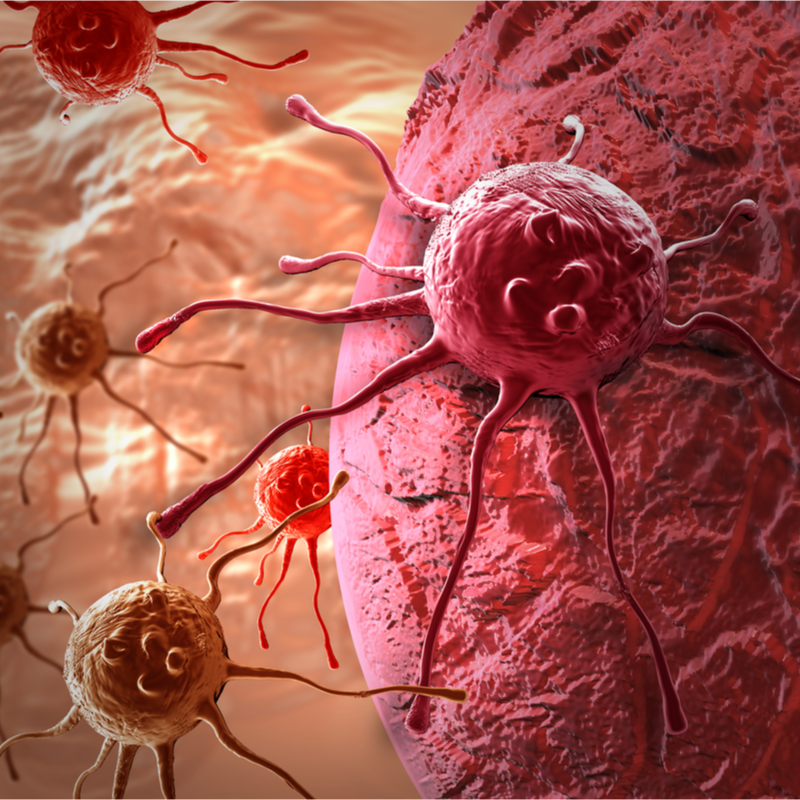
What is a medulloblastoma?
Medulloblastoma is the most common malignant brain tumour in children and adolescents, accounting for 20 percent of all cases. It is usually diagnosed between five and eight years of age. Boys are affected slightly more often than girls and this tumour is very rare in adults. In adulthood, medulloblastoma accounts for only about 10 % of all tumours in the brain. Particularly often, medulloblastoma develops in the posterior fossa of the skull. In children, these are mainly located in the middle of the skull and in adults they are more likely to be on the side of the cerebellum. In many patients, the tumour grows into the cerebrospinal fluid ducts . For this reason, tumour cells have an easy time spreading through this cerebrospinal fluid in the spinal canal and also throughout the brain. . In about one in three patients, the tumour has already metastasised when the diagnosis is made. Most of these are found in the central nervous system.
What causes medulloblastoma?
The medulloblastoma is formed from embryonic, i.e. undifferentiated and very immature cells of the central nervous system. These cells are defectively developed and highly proliferated. However, the cause of this is still completely unclear. Scientists and experts have observed, however, that in many cases medulloblastoma is associated with corresponding changes in the chromosomes in the context. Ionising radiation is considered to be a particular risk factor, for example, children who have already had to undergo radiation therapy due to another disease. For these children, the risk of developing a medulloblastoma is very high.
What are the symptoms of medulloblastoma?
Due to the rapid growth of the tumour, symptoms appear rapidly. Because of the impairment of the 4th brain ventricle and the cerebellum, nausea, vomiting, dizziness, movement disorders with unsteady gait and coordination problems occur. Due to the impairment of the brain stem, there may be failures of the cranial nerves. This usually has visual disturbances, seeing double images and facial paralysis as complaints. If the cerebrospinal fluid drainage is impaired or obstructed , there is an increase in intracranial pressure due to the increase in cerebrospinal fluid. Then those affected usually suffer from nausea, headaches, vomiting, severe fatigue and drowsiness. Again other patients suffer from personality changes or confusion. Especially in children, a rapidly growing and extremely large head is noticeable. This growth is a sure sign of increasing cerebrospinal fluid and intracranial pressure.
How is a medulloblastoma diagnosed?
As a rule, patients with symptoms of a brain tumour first go to the family doctor or paediatrician. The doctor will use the medical history to ask about the exact symptoms. If there is a suspicion of a medulloblastoma, he or she will refer the patient to a specialised centre, which will carry out the next examinations . In a CT scan that has been carried out, the tumour usually looks very bright and absorbs contrast medium well. In many cases, calcium deposits can be seen in the tumour. However, the MRI is considered to be the golden choice among imaging examination methods. The MRI includes not only the skull, but also the spine. This way any metastases in the entire central nervous system can be excluded or even discovered. As a diagnostic supplement, the examination of the cerebrospinal fluid is carried out. A lumbar puncture is indispensable for this. However, the diagnosis of medulloblastoma can only be made with certainty if the histological findings of the CSF prove the presence of a tumour. This result also has an immediate influence on the therapy and prognosis of the patient.
How is a medulloblastoma treated?
The most efficient choice of therapy is, of course, microsurgical removal of the medulloblastoma. The operation is planned and also performed in intensive cooperation of a neurosurgeon, neuropathologist, neuroradiologist, oncologist and radiation oncologist. Due to the rapid growth of the tumour, today's therapy consists of a combined operation of the tumour followed by radio and/or chemotherapy. Chemotherapy without prior surgery has no effect at all on a medulloblastoma. Of course, the specialists are careful to spare the healthy surrounding brain tissue as much as possible. The treatment always depends on the age of the patient, the metastasis, the subtype of the tumour and the general state of health.
What accompanying therapy measures are there?
The symptoms of intracranial pressure are usually treated with the cortisone preparation Dexamethasone. This is mostly used during the period of the surgical removal of the tumour and the radiotherapy. Depending on how severe the symptoms and complaints are, rehabilitation follows in an appropriate hospital. Psychosocial support is available for affected persons and their relatives in most clinics .
What is the prognosis for medulloblastoma?
Thanks to the aggressive combination therapy of surgery and radio- and/or chemotherapy, about 80 % of patients can be cured. However, the prospects of success always depend on the subtype of the medulloblastoma. Since radiotherapy has enormous side effects in children under 3 years of age, such as endocrinopathy and neurological deficits, chemotherapy is given to them after surgery. The first goal is always the maximum radical tumour removal with the restoration of optimal CSF outflow. If it is not possible to restore the patient's own CSF outflow, a ventriculoperitoneal shunt may be placed. This then directs the CSF into the abdomen via a catheter under the skin.
How is a medulloblastoma followed up?
Since a recurrence should always be expected, careful follow-up care of the medulloblastoma is essential. Depending on the aggressiveness of the tumour, imaging examinations are performed at intervals of 3 to 6 months. This is so that a recurrence can be detected quickly and treated again . Should the medulloblastoma recur, all therapy measures will take effect again, surgery, radio and/or chemotherapy. If chemotherapy is still in progress, regular blood tests are indispensable.
